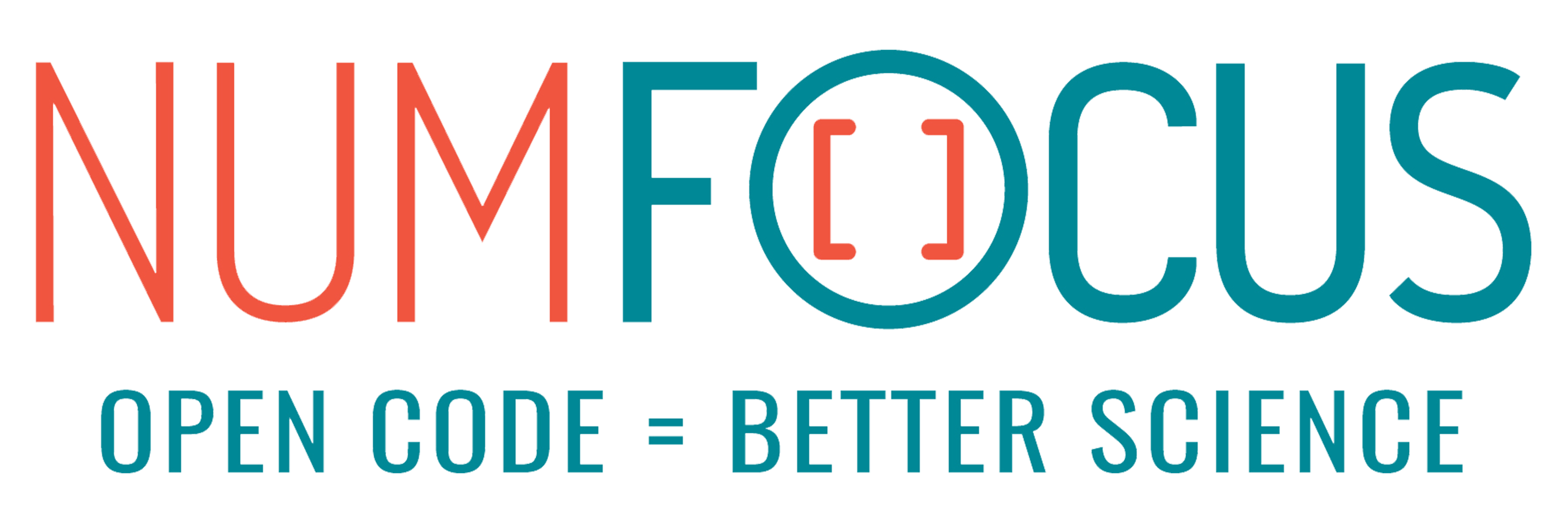Hi,
the code below used to work but has ceased to do so.
For context, working with the following geoviews dataset:
gvDataset.dimensions()
[Dimension('lon'),
Dimension('lat'),
Dimension('experiment'),
Dimension('rrs_unc')]
where
gvDataset['experiment']
array(['O3', 'Pressure', 'WindSpeed', ..., 'Lt', 'All', 'RH'], dtype=object)
then...
image = gvDataset.to(gv.Image, ['lat', 'lon'] ) * gf.land(style=dict(facecolor='gray'))
yields...
KeyError Traceback (most recent call last)
in ()
3 ancMin, ancMax = 1e-6, 1e-4
4 gvDataset = MakeGvDS(band)
----> 5 image = gvDataset.to(gv.Image, geodims) * gf.land(style=dict(facecolor='gray'))
6 layout = hv.NdLayout(image)
7 layout.cols(2)
~/anaconda3/lib/python3.5/site-packages/geoviews/element/init.py in call(self, *args, **kwargs)
24 if 'crs' not in kwargs and issubclass(group_type, _Element):
25 kwargs['crs'] = self._element.crs
---> 26 return super(GeoConversion, self).call(*args, **kwargs)
27
28 def linecontours(self, kdims=None, vdims=None, mdims=None, **kwargs):
~/anaconda3/lib/python3.5/site-packages/holoviews/core/data/init.py in call(self, new_type, kdims, vdims, groupby, sort, **kwargs)
132 return element.sort() if sort else element
133 group = selected.groupby(groupby, container_type=HoloMap,
--> 134 group_type=new_type, **params)
135 if sort:
136 return group.map(lambda x: x.sort(), [new_type])
~/anaconda3/lib/python3.5/site-packages/holoviews/core/data/init.py in groupby(self, dimensions, container_type, group_type, dynamic, **kwargs)
549
550 return self.interface.groupby(self, dim_names, container_type,
--> 551 group_type, **kwargs)
552
553 def len(self):
~/anaconda3/lib/python3.5/site-packages/holoviews/core/data/xarray.py in groupby(cls, dataset, dimensions, container_type, group_type, **kwargs)
123 if drop_dim:
124 v = v.to_dataframe().reset_index()
--> 125 data.append((k, group_type(v, **group_kwargs)))
126 else:
127 unique_iters = [cls.values(dataset, d, False) for d in group_by]
~/anaconda3/lib/python3.5/site-packages/geoviews/element/geo.py in init(self, data, **kwargs)
81 elif crs:
82 kwargs['crs'] = crs
---> 83 super(_Element, self).init(data, **kwargs)
84
85
~/anaconda3/lib/python3.5/site-packages/holoviews/element/raster.py in init(self, data, bounds, extents, xdensity, ydensity, **params)
257 SheetCoordinateSystem.init(self, bounds, xdensity, ydensity)
258
--> 259 if len(self.shape) == 3:
260 if self.shape[2] != len(self.vdims):
261 raise ValueError("Input array has shape %r but %d value dimensions defined"
~/anaconda3/lib/python3.5/site-packages/holoviews/core/data/init.py in shape(self)
565 def shape(self):
566 "Returns the shape of the data."
--> 567 return self.interface.shape(self)
568
569
~/anaconda3/lib/python3.5/site-packages/holoviews/core/data/grid.py in shape(cls, dataset, gridded)
101 return dataset.data[dataset.vdims[0].name].shape
102 else:
--> 103 return (cls.length(dataset), len(dataset.dimensions()))
104
105
~/anaconda3/lib/python3.5/site-packages/holoviews/core/data/xarray.py in length(cls, dataset)
249 @classmethod
250 def length(cls, dataset):
--> 251 return np.product(dataset[dataset.vdims[0].name].shape)
252
253 @classmethod
~/anaconda3/lib/python3.5/site-packages/holoviews/core/data/init.py in getitem(self, slices)
377 value_select = None
378 if len(slices) == 1 and slices[0] in self.dimensions():
--> 379 return self.dimension_values(slices[0])
380 elif len(slices) == self.ndims+1 and slices[self.ndims] in self.dimensions():
381 selection = dict(zip(self.dimensions('key', label=True), slices))
~/anaconda3/lib/python3.5/site-packages/holoviews/core/data/init.py in dimension_values(self, dim, expanded, flat)
574 """
575 dim = self.get_dimension(dim, strict=True)
--> 576 return self.interface.values(self, dim, expanded, flat)
577
578
~/anaconda3/lib/python3.5/site-packages/holoviews/core/data/xarray.py in values(cls, dataset, dim, expanded, flat)
157 if dim in dataset.vdims:
158 coord_dims = dataset.data[dim.name].dims
--> 159 data = cls.canonicalize(dataset, data, coord_dims=coord_dims)
160 return data.T.flatten() if flat else data
161 elif expanded:
~/anaconda3/lib/python3.5/site-packages/holoviews/core/data/grid.py in canonicalize(cls, dataset, data, coord_dims)
143 slices = []
144 for d in coord_dims:
--> 145 coords = cls.coords(dataset, d)
146 if np.all(coords[1:] < coords[:-1]):
147 slices.append(slice(None, None, -1))
~/anaconda3/lib/python3.5/site-packages/holoviews/core/data/xarray.py in coords(cls, dataset, dim, ordered, expanded)
142 @classmethod
143 def coords(cls, dataset, dim, ordered=False, expanded=False):
--> 144 dim = dataset.get_dimension(dim, strict=True).name
145 if expanded:
146 return util.expand_grid_coords(dataset, dim)
~/anaconda3/lib/python3.5/site-packages/holoviews/core/dimension.py in get_dimension(self, dimension, default, strict)
892 name_map.update({dimension_sanitizer(dim.name): dim for dim in all_dims})
893 if strict and dimension not in name_map:
--> 894 raise KeyError("Dimension %s not found" % dimension)
895 else:
896 return name_map.get(dimension, default)
KeyError: 'Dimension experiment not found'


































